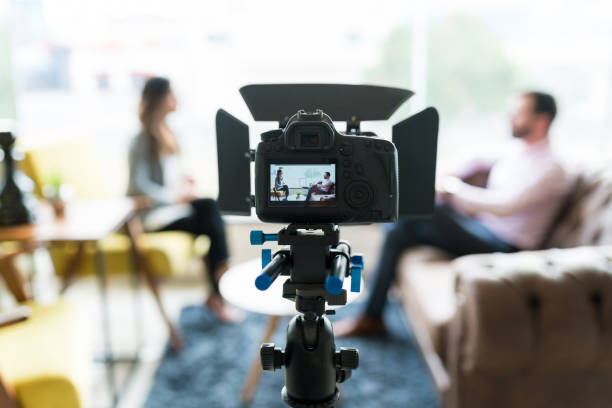In PR, broadcast pitching is sometimes underused and overlooked when it comes to securing coverage for clients. From national outlets like CNN, Fox Business or the Today show to local affiliates, a solid broadcast segment can make a lasting impact. Broadcast segments typically have a large and high-quality reach in real time, and they live online and are searchable thereafter. Most PR teams will amplify segments on social media for further exposure.
When pitching broadcast outlets it’s important to note the main differences between the medium and print, and to offer producers the information the need for potential segments. Here are some top PR tips for scoring top broadcast stories.
Make it relevant
No matter what you’re pitching, to gain a producer’s attention, the subject matter must be topical and newsworthy. Pay attention to the news cycle and breaking stories – can you tie your client into a relevant headline? You may be able to use a current topic in the news cycle for your client/brand, but bear in mind that a spokesperson must be ready to open their schedule for a segment on short notice. Producers and guest bookers work on very tight deadlines, so a fast pitch and even faster response are often essential.
Local vs. national
Are you pitching local news or national? For local affiliates, it’s best to tie the story into a local angle, as that’s what local outlets cover. When you want to target a specific part of the country, regional broadcast is the way to go. National segments are reserved for wider announcements that typically appeal to a national audience, of course. Producers and assignment editors are looking for stories that tie into current news. So if your news isn’t a big story, find a way to tie it to the flow of the news to add the hook for the producer. In our work promoting new COVID-19 diagnostic products, we’re naturally looking for local news outlets where the virus has spiked, which are unfortunately all too common. For a more business-oriented story, you may want to pay attention to regional statistics on employment, spending, and consumer confidence, for example.
Spell it out
When pitching a producer, make the necessary segment points clear. Before the producer even has to ask, you should provide information needed such as expert spokesperson bio, images, b-roll, company description or boilerplate, sample talking points and links to previous interviews the spokesperson has done so the producer can see how they appear on camera. Give the producer any relevant information to make them understand the who, what, and why of a potential segment. Providing any necessary information upfront is more likely to draw the producer’s attention and approval and save on subsequent back-and-forth email exchanges.
Use the newsdesk
Always send the pitch and relevant news directly to the station’s newsdesk. The newsdesk is the department of a broadcasting organization responsible for collecting and reporting the news. The reporters at the newsdesk make sure any relevant/interesting news that comes in is presented in the station’s morning meeting and possibly selected for segments. It’s important to pitch your story early before the stations have their daily meetings. If you don’t hear back from them, pick up the phone and call them to make sure they received your email!
Know the producers beat
As with any kind of media pitching, it’s best to take the time to research and learn who would be the best person(s) to receive your pitch instead of blasting the pitch to a wide list of contacts. Research the producers, review their last segment, and find out what they typically work on that might be a fit for your story. You can even personalize your note and mention their latest segment in your email. This will help your pitch stand out and they’ll realize that you took the time to do some research before sending a “cold” email. A strong first impression can help build a lasting relationship which may mean additional segment opportunities – a win-win.
Follow up
Producers receive many pitches in a given day, and it’s hard to keep track of everything they receive. They may be interested in your story but get quickly sidetracked by another email or query. There’s a school of thought that PR people shouldn’t bother media after sending a pitch because they risk being annoying. But in the real world, we recommend following up, and if you don’t hear back, consider a phone call. If you have a quality story idea in mind, it will pay to be respectfully persistent.




 But in this instance, the PR pro’s on-camera demeanor made Pattinson look a bit helpless and pampered. After all, personal relationships are part of the game, and if Seacrest didn’t agree to ground rules barring the topic, why wouldn’t he mention it? Pattinson laughs off the awkwardness gracefully, but he should have brushed off the question for himself.
But in this instance, the PR pro’s on-camera demeanor made Pattinson look a bit helpless and pampered. After all, personal relationships are part of the game, and if Seacrest didn’t agree to ground rules barring the topic, why wouldn’t he mention it? Pattinson laughs off the awkwardness gracefully, but he should have brushed off the question for himself.

